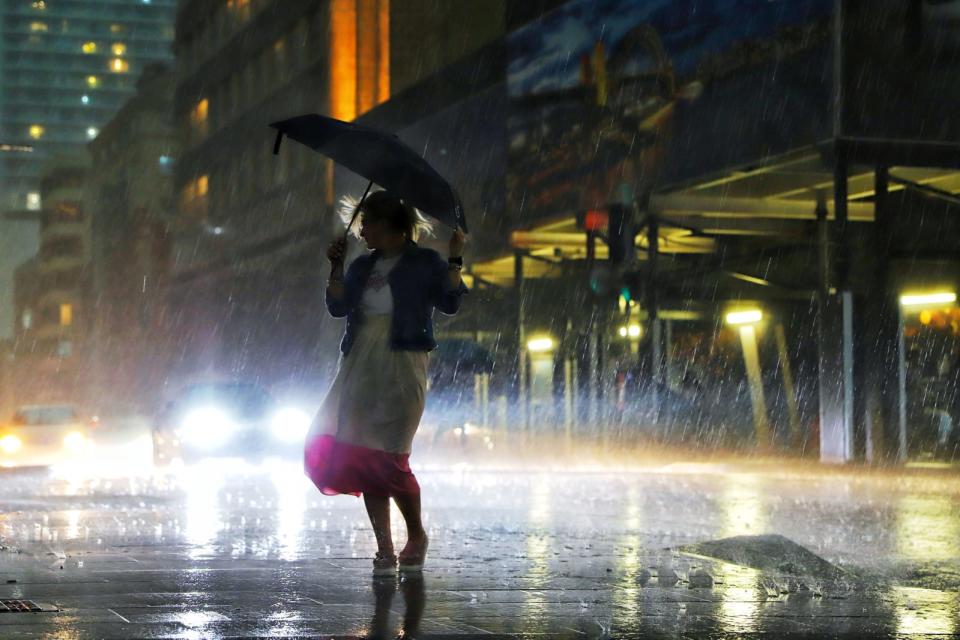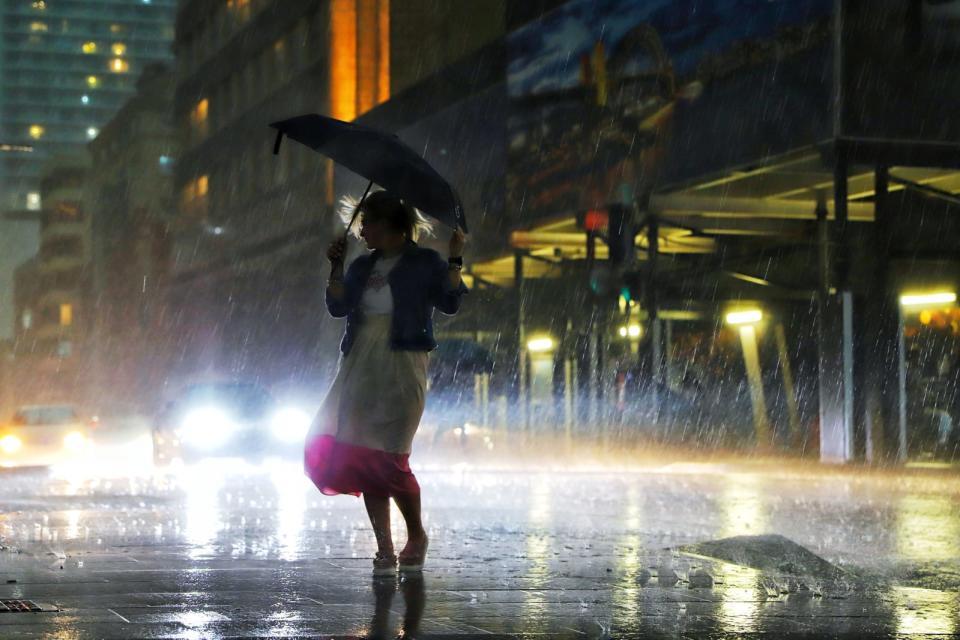Rain may soon be an effective source of renewable energy
A generator can briefly light up 100 LED bulbs with a single drop.
There have been numerous attempt to generate electricity using rain, but this may be one of the more effective solutions yet. Researchers have developed a generator that uses a field-effect transistor-style structure to instantly produce a surprisingly high voltage from water drops -- a single drop can muster 140V, or enough power to briefly light up 100 small LED bulbs. Earlier generators without the structure produced "thousands" of times less instant power density, the scientists said.
The new design mates an aluminum electrode with an indium tin oxide electrode layered with PTFE, a material with a "quasi-permanent" electric charge. When a drop hits the PTFE/tin surface, it bridges the two electrodes and creates a closed-loop circuit. That helps fully release any stored charges. The technology could handle sustained rainfall, too. If there are continuous drops, the charge accumulates and eventually hits a saturation point.
There's still work to be done to translate this to a practical product. A brief burst of energy is easy -- accumulating enough of it for continuous power is another matter. Still, the potential uses are easy to see You could apply generators like this to the surface of anything where rain (or other water splashes) is likely to strike. Building rooftops could offset at least some of the electricity use from the people below, while electric boats could extend their range. It could even be used to power connected devices that regularly get wet, like umbrellas and water bottles.


